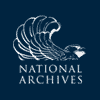John Isaac Hawkins to Thomas Jefferson, 8 June 1803
From John Isaac Hawkins
Philadelphia June 8th. 1803
Sir/
I take the liberty to request as a favor you will permit the bearer Mr. Uri K. Hill to take your likeness in Profile with one of my Patent Physiognotraces, and would also ask leave to Publish copies of the same, here & in Europe.
Mr. Hill is a Pupil of Nature, whom I have lately met with in travelling thro’ the New England states. with her instruction he has composed several beautiful pieces of Music in a peculiar stile, and plays with much taste on various musical instruments, particularly the violin, of which he bids fair to become a master. I flatter myself you would be pleased with his performances as a specimen of the force1 of native american genius.
I expect to sail for England in about two weeks one of my first objects will be to set forward a manufactory of Claviols; will send the first perfect one to your order.
I am Sir Your Hbl Sevt
John I. Hawkins
RC (MHi); at foot of text: “Thomas Jefferson Esqr.”; endorsed by TJ as received 14 June and so recorded in SJL with notation “by mr Hill.”
After he left Georgetown in 1803, 22-year-old uri k. hill took his Hawkins physiognotrace to New York City and New England. Hawkins had given him the use of the patented invention to help pay his debts, and Hill advertised profile likenesses “taken in gold, on glass, for seven Dollars each, or cut in paper for fifty Cents” from a machine known to “excel all others in accuracy.” He had less success as a profilist than he did in advancing his musical, engraving, and publishing career. Hill’s published music included The Vermont Harmony in 1801 and The Sacred Minstrel, No. 1, in 1806. He advertised his vocal and instrumental schools and concerts in Hartford and Boston and solicited subscriptions to a proposed quarterly publication, American Musical Museum. He was briefly in debtors prison in Rutland, Vermont, in 1804 (Randolph, Vt., Weekly Wanderer, 27 Feb. 1802; Rutland Herald, 12 May 1804; Boston Repertory, 10 Oct. 1806, 10 Apr. 1810; Boston Gazette, 13 Mch. 1806; Peter Benes, “Machine-Assisted Portrait and Profile Imaging in New England after 1803,” in Painting and Portrait Making in the American Northeast, published as Dublin Seminar for New England Folklife Annual Proceedings, 19 [1994], 138–9; Ellen G. Miles, “1803—The Year of the Physiognotrace,” in same, 135–6).
For Hawkins’s patent physiognotraces, see Vol. 39:306–7, 383–4.
1. Preceding three words interlined.

![University of Virginia Press [link will open in a new window] University of Virginia Press](/lib/media/rotunda-white-on-blue.png)
